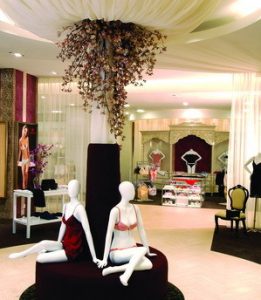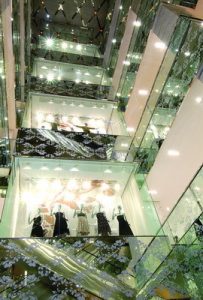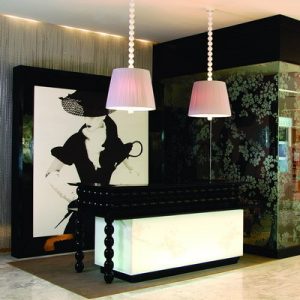Americans who think of the Asian market as a monolith of cultures, religions, attitudes and retail brands need to be reminded that it takes as long to fly from Japan to Indonesia as it does to fly from Seattle to Tokyo.
So Seibu, the upscale Japanese department store chain known for beautiful in-store artwork and fresh, creative window campaigns, is a largely unknown brand in Indonesia. But when Seibu merged with rival Sogo Co. in 2003 to form Millennium Retailing, it inherited Sogo’s international licenses. And Sogo, a 177-year-old kimono merchant-turned-department store chain, has nine stores in Indonesia, including three in the teeming capital of Jakarta.
“Sogo is at the top of the market in Indonesia,” says Dawn Clark, principal at Callison, the Seattle-based architecture firm that built and designed Seibu’s new Jakarta flagship. “The stores are well-organized, efficient and orderly. But they’re a little too institutional, the lighting a little too bright, to have the richness and depth of Seibu stores. Sogo stores are the equivalent of our big-box retailing.”
But Seibu wanted to bring, well, Seibu, to Jakarta – the detail, elegance and femininity of the world’s fashion meccas. As the economic capital of the Indonesian archipelago of 234 million people, Jakarta has a growing cosmopolitan population, particularly people of Chinese descent but also those from India, Australia and the U.K. If the taste level is not yet haute couture, it’s at least well-traveled and cultivated. “If Seibu was going to build a flagship in Jakarta,” says Clark, who headed the project for Callison, “a rich and layered environment would be distinctly different from the other large stores in Jakarta, and distinctly Seibu. We wanted to celebrate the Japanese brand and the country’s retail sophistication.”
Advertisement
The 108,000-square-foot store is centered around a five-story etched glass, chrome and mirrored atrium designed with cantilevered stages that showcase custom displays and visual merchandising. Each of the six levels is designed as a distinct space. Finely detailed hand-carved and inlaid marble floors throughout the store are accented by handmade marble busts, carved wood statues and custom leather pieces in each department.
But the store also celebrates Indonesian culture – sunny, informal, equatorial – and the country’s rich materials, textures and craftsmanship. One of the most pleasant surprises of building a store in Indonesia, says Clark, was the abundance of local craftsmen and artisans who could make, cut or carve anything. “We had no budget for importing,” she says, “so we were dependent on local stone carvers, leather workmen, even puppet-makers. But Indonesia is a culture of craftsmen, so we were able to get just about everything we needed.”
Ironically, Clark notes, this project’s particular interpretation of Japanese retail culture – with hand-cut marble patterns, textured woodwork, exotic materials and patterned wall-coverings – probably couldn’t have been built in Japan. “It would have been too expensive,” she says, and too difficult.
“Japan is a highly structured culture,” Clark continues. “New ideas and innovative solutions are much more difficult to navigate through the systems that have been set in place, and that often dilutes the final outcome. The Indonesian thought process is at the other end of the spectrum, much more fluid, open and receptive. They feel they can do anything. They’re eager for the challenges.”
The challenge is more than just establishing a Jakarta flagship, however. “The Seibu flagship is not just a store for the people of Jakarta,” says Alan Thomson, Seibu’s director of operational and business development, “but for the entire Southeast Asia region.” And for the retailer, it’s brand extension into a place where the outward cultural similarities mask real differences in experience and outlook.
Advertisement
Client: PT. Panen Selaras Inti Buana, Jakarta, Indonesia
Design: Callison, Seattle – Dawn Clark, principal-in-charge; Doug Shaw, project manager; Andy Thaemert, design director; Jeany Kim, Erik Mueller Ali, Nicole Bentley, design team
Architect: RTKL, Baltimore (building)
General Contractor: PT. Daya Indria Permai, Jakarta, Indonesia
Interior Contractors: PT. Catur Griya Naradipa, Jakarta, Indonesia; PT. Andhikapura Perkasa, Jakarta, Indonesia; PT. Wahana Mega Hastakarya, Jakarta, Indonesia; Aljeff, Jakarta, Indonesia
Lighting: Lighting Design Alliance, Los Angeles; PT. LITAC, Jakarta, Indonesia
Advertisement
Photography: Stefanus Pakan, Jakarta, Indonesia
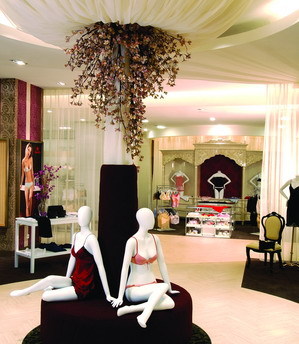

 Headlines2 weeks ago
Headlines2 weeks ago
 Headlines2 weeks ago
Headlines2 weeks ago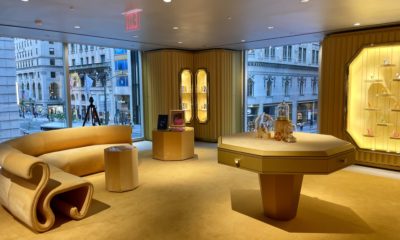
 Eric Feigenbaum6 days ago
Eric Feigenbaum6 days ago
 Headlines1 week ago
Headlines1 week ago
 Headlines1 week ago
Headlines1 week ago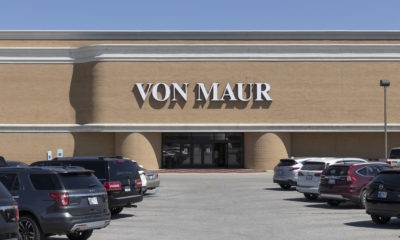
 Headlines4 days ago
Headlines4 days ago
 Headlines6 days ago
Headlines6 days ago
